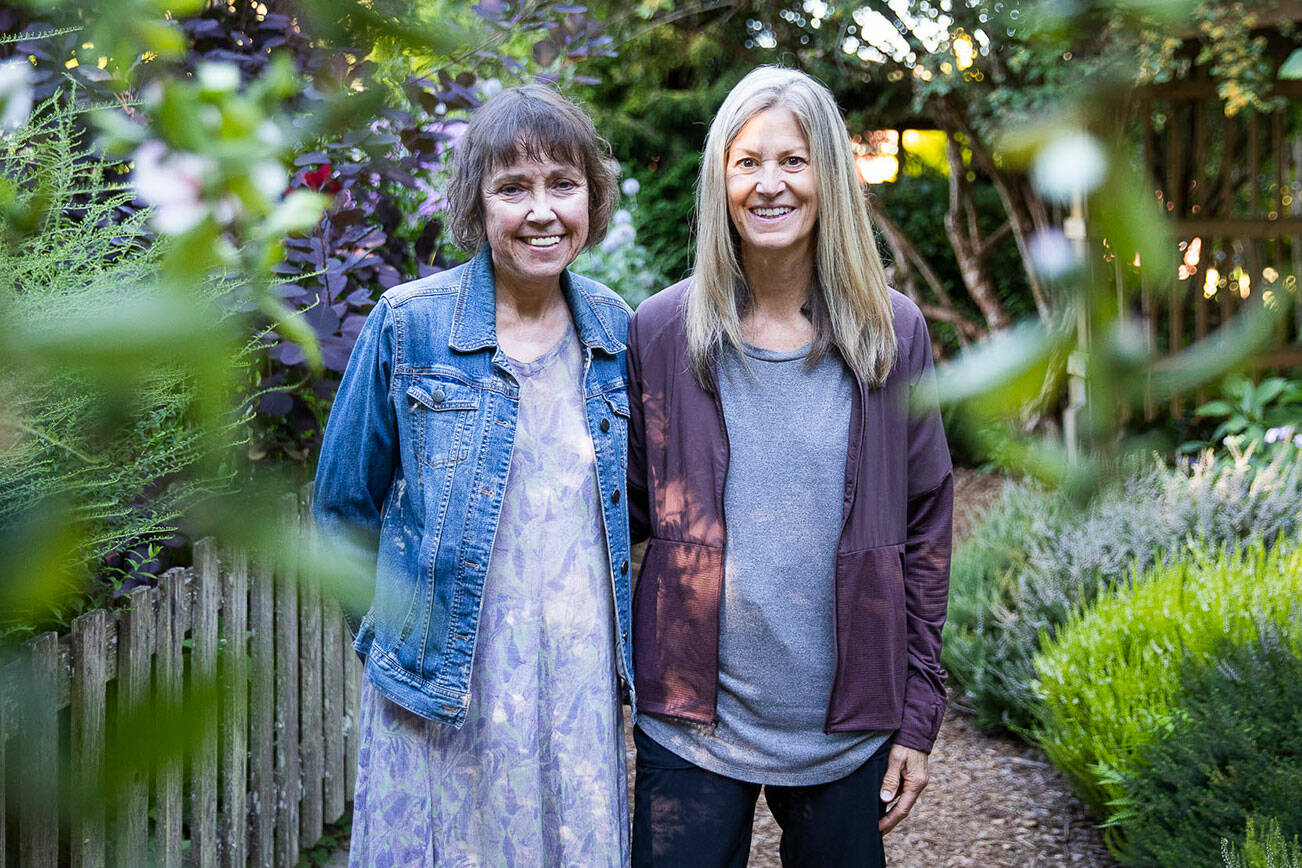MARSYVILLE — Diane Tillman went plum-picking on Wednesday — something she probably couldn’t have done without the “gift” she received from her coworker Susan Kasch three years ago.
Kasch, 59, donated a kidney to Tillman in 2019. At the time, the two Marysville School District employees hardly knew each other. Now, they meet at least once a year to celebrate the anniversary of a surgery that they say changed both their lives.
“She was just a distant coworker,” Tillman said. “We’re really close now.”
They say their story is a “miracle” from God. And they speak readily about the experience, in the hope that their story will inspire more people to donate kidneys.
“It wasn’t a fun surgery, but it was just such a small portion of my life,” Kasch said. “Why wouldn’t more people be willing to sacrifice a small portion of their life for something that is so life-changing?”
Tillman, 61, estimates her transplant saved her at least $72,000 per year that would have otherwise gone to dialysis. It also extended her life.
According to the University of California San Franscisco, more than 80% of transplant patients are alive five years after their surgery. That compares to 35% of dialysis patients after five years of treatment.
“It’s given me a longer life, and a better quality life,” said Tillman, whose kidney was functioning at about 19% of normal in 2019. Renal failure occurs when kidney function drops below 15%. Most renal failure patients end up on dialysis for about five to 10 years before they die, Tillman said.
Scientific studies have found patients like Tillman who receive a live donation have a better three-year survival rate than those who receive a kidney from a deceased donor.
In the past three years, Tillman has adjusted to life after a transplant. She will take immunosuppressant medications for the rest of her life. She lives with minor side effects, including an increased sensitivity to the sun.
Her daily habits have changed to accommodate those side effects, she said. For the sun sensitivity, she applies sunscreen regularly. She wears gloves and a special Coolibar sun-blocking jacket.
“I feel very weird with my gloves … but the thing is, everyone is supposed to put sunscreen on every two hours,” Tillman said. “They don’t. I never did. So it’s just being mindful and careful.”
She also is more cautious with some of her hobbies, like gardening. Exposure to mold or dust can prove fatal, she said.
“How you deal with that is to wear a mask,” Tillman said. “But still it’s scary to garden sometimes.”
With the ongoing pandemic, she takes similar precaution. She said she usually wears a mask at school, and she is fully vaccinated.
Tillman worried the side effects could outweigh the benefits of a transplant.
“I remember sitting in the parking lot at school on the phone with a doctor who was trying to talk me into getting the transplant,” she said.
Three years later, it’s clear the transplant was the right choice. She said the side effects and habit changes are minimal compared to what life would have been like without the new kidney.
“It’s been a journey after the transplant, learning to adjust to new medications and side effects,” Tillman said. “But the amazing thing is I had a transplant. That’s the miracle.”
Kasch, a paraeducator, also considers the transplant a miracle. About two weeks before Tillman started substitute teaching in the same classroom, Kasch saw a documentary about kidney transplants. She decided then she wanted to become a donor, if an opportunity arose.
Then, she met Tillman, who openly shared that she needed a new kidney.
“People don’t just volunteer their kidney,” Tillman said. “But Susan is like that. She has a big heart.”
Tillman wasn’t sure if Kasch could donate directly to her, because Tillman has relatively rare O negative blood. Transplant patients can only receive a kidney from a donor with the same blood.
But after a series of medical tests, doctors found Kasch was a match for Tillman. The surgeries took place on Aug. 21, 2019.
Tillman was back in the classroom about three months later. She said school staff noticed her skin looks better. She also has more energy.
Kasch returned to work after six months. Her job requires some heavy lifting, and doctors asked her to wait.
“Now the government will pay for your living expenses, if you’re a donor, for the time you take off work,” Tillman said.
The biggest difference Kasch noticed in her life? She drinks more water now. Water helps maintain regular kidney function, especially for donors.
Kasch knows another coworker and a niece who donated kidneys after she did, in part inspired by her actions. Both approached Kasch to learn what to expect.
Kasch doesn’t take full credit for helping Tillman, though. She said most of the credit goes to God, who “pressed on her heart.”
“He made my body strong,” she said. “He brought us together. He put it on my heart before I knew where the need was.”
Tillman plans to join an outreach program to drum up even more live donors once she retires. Until then, she and Kasch share their story as often as they can.
Mallory Gruben is a Report for America corps member who writes about education for The Daily Herald.
Mallory Gruben:



